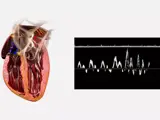A basic knowledge of ultrasound physics and instrumentation is vital to ensure the correct application of ultrasound. Understanding how images are generated will enable you to recognize artifacts and thus help to prevent misdiagnosis.
This module (2 of 2) follows on from Ultrasound Physics 1 and guides you through more ultrasound physics principles, including artifacts, bioeffects, Doppler, and hemodynamics. It contains many illustrations and animations to help you understand important concepts.
Ultrasound Physics 2 is suitable for all practitioners of ultrasound or anyone interested in learning about ultrasound physics. It is a valuable learning resource for anyone getting ready for the ARDMS Sonographic Principles and Instrumentation (SPI) Exam.
You’ll learn
- more ultrasound physics terminology and definitions
- how to identify and explain artifacts (reflection errors), and methods to minimize artifacts
- the methods used to measure power, and the relationship between power and patient exposure
- how ultrasound interacts with living tissues and methods to minimize bioeffects
- how harmonics can be used in diagnostic medical sonography
- about hemodynamics, including different flow types and forms of energy
- about Doppler principles: Doppler effect, color Doppler, power Doppler, and spectral Doppler
- about testing equipment performance and the importance of quality assurance and preventive maintenance
- and much more (see Content tab for more detail)





